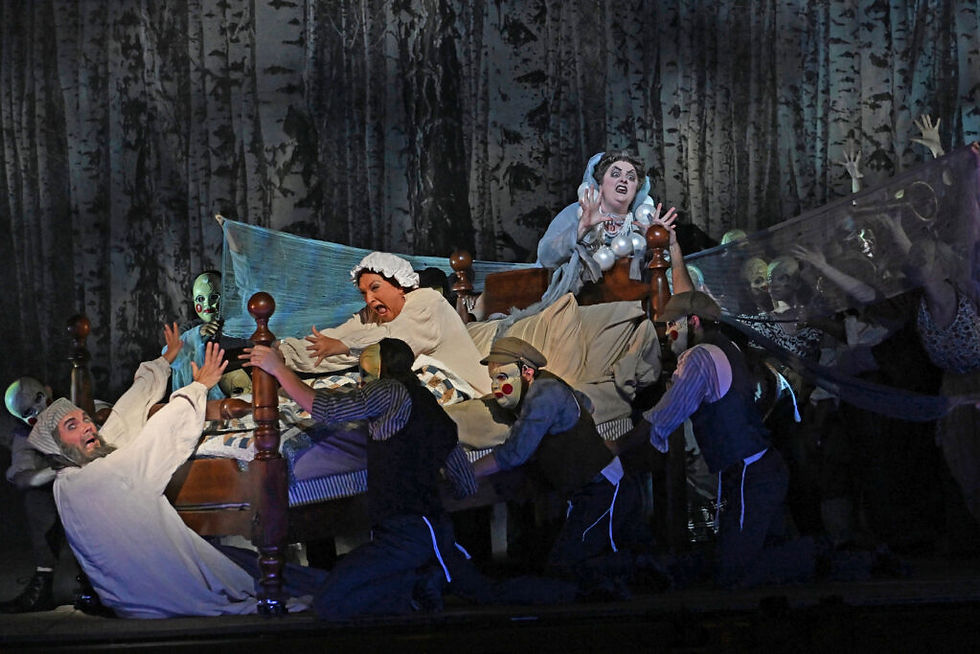Opera News: "Another Look" by Kenneth Overton
- ebrown9879
- May 4, 2023
- 3 min read
A singer explores the use of ethnic makeup in opera and how challenging its use has supported race-conscious casting in the industry.

TO PAINT OR NOT TO PAINT:
IS THAT THE QUESTION? What is “Blackface,” really? Is it an outdated, racist, derogatory practice or a lazy excuse for making our art form more “realistic” in the current day? These are the questions I asked myself and a few other artists whose work I love and respect. In my opinion, the term “Blackface” is misused as it pertains to opera and makeup. I see “Blackface” as not merely darkening one’s skin but a literal, deliberate mockery of Black people through the use of charcoal or shoe polish on the face while overly exaggerating the eyes and lips.
I did not grow up with opera; I had no interest in it until I was in high school. I was exposed to the artistry of Jessye Norman in a live recital in Philadelphia, and my whole life changed. Because I saw Ms. Norman, I knew that a career in classical music and opera was possible for me. I became a sponge and watched everything related to opera on PBS and practically lived in the listening library. The first opera I saw on PBS was the 1989 Metropolitan Opera telecast of Aida, with an all-star cast including Plácido Domingo, Dolora Zajick, Sherrill Milnes and the stunning Aprile Millo in the title role. I had no idea who any of these artists were at the time, but I was moved by their voices and transported by Sonja Frisell’s extravagant production. I couldn’t wait to get to school the next day and share with my choir director what I had experienced. “Mr. King, I saw Aida last night on Channel 12, and it was amazing! There was a beautiful Black soprano singing Aida.” Mr. King advised me that Ms. Millo was not Black, but that she was wearing makeup to play a character who was. He explained that this was customary in opera. This was my first experience of makeup being used to change one’s appearance to represent a different ethnicity. I remember being stunned—but not necessarily in a bad way. It did pique my curiosity, and I delved more deeply into the art form. AS I BEGAN MY OWN SINGING CAREER
in the regional opera houses of America, I was hired to sing roles such as Ping in Turandot and Prince Yamadori and the Imperial Commissioner in Madama Butterfly. Depending on the house and the production, I would be made up to appear Chinese or Japanese with the use of Asian-presenting makeup. I did not believe then that I was participating in a practice that could be perceived as harmful or racist. I was just getting into “character.” Just as Millo had darkened her skin as Aida, several iconic African American singers that I had grown to love and admire, such as Leontyne Price, Martina Arroyo, George Shirley, Grace Bumbry and Shirley Verrett, all sang roles for which they used makeup to lighten their skin. If it was O.K. for them, what could be the problem for me?
In the case of Aida, the soprano cast in the title role must feel complete isolation as a singing actor. To me, Aida is more than just a love triangle: it is the story of two African countries at war. At the heart of the opera we have an Ethiopian princess who is enslaved in a country where no one looks like her. I have made my career as a Black artist in the world of opera, so I know what it is like to be the only person in the room who looks like me; that feeling and that reality can be difficult to express and even more difficult to experience.




Comments